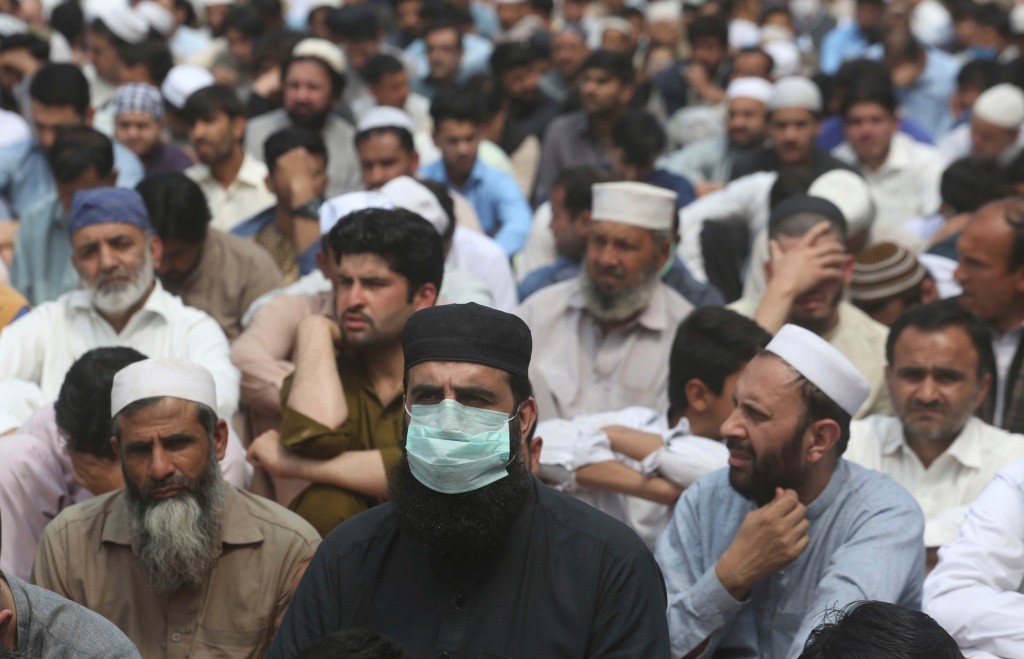The year 2020 has been dominated by one bad news after another. In Pakistan, the year kick-started with talk of the Coronavirus which originated in China and was predicted to spread across the globe. As the virus made its way around the world, we were apprised of its symptoms, how fast it could spread and the initial facts that came with it. We were told early on that there was no cure for the virus.
Pakistan reported its first Covid-19 case on February 26, which reached 1000 cases within a month. The number rapidly increased and doubled within a week. After 80 days, the country’s confirmed Coronavirus cases stood at 50,000. It wasn’t until July that the curve started to flatten.
During the days when the virus peaked in the country, Benazir Bhutto Hospital in Rawalpindi had almost 500 patients. Staff at the hospital had to turn a number of patients away, even those with severe symptoms; owing to the hospital being full till its capacity. The situation became so bleak that hospital staff and doctors were becoming infected with Covid-19 on a daily basis. And now, a few weeks on, the hospital has not even one Coronavirus patient.
A lot of literature and data pertaining to Covid-19 in Pakistan has been described as “a bit of a mystery” as the country witnessed an alarming decline and a steady drop in the number of cases just after its major peak in June. From witnessing around 6,800 cases in a day to just a few hundred in September, it truly remains a mystery how the spread of the virus started to slow down. Pressure on the country’s health care system has now eased and most of the restrictions, save for schools, have now been lifted.
In his mission to fight the pandemic, Minister for Planning, Development and Special Initiatives Asad Umar had warned that around 1.2 million people in Pakistan could be infected by the end of July. Whether by miracle or by luck, the reality didn’t turn out to be half as bad. This begs the question, what really happened between July and August? How did Pakistan start seeing this decline in its covid numbers? Leading experts in the field have tried to understand the strategy adopted by the government of a country of 220 million people with close to 300,000 cases and a deteriorating health care system.
First and foremost, health officials, researchers and medical practitioners believe that a number of environmental factors as well measures taken by the government helped to flatten the curve and reduce the intensity of the virus. Experts have also pointed at the fact that Pakistan’s population is mostly made up of the youth who have strong immunity against infectious diseases. This could also be the reason for the considerably lower fatality rate as compared to those of developed nations.
Speaking to Gulf News, Dr. Faisal Sultan, infectious disease specialist and Prime Minister’s special assistant on national health services said, “Pakistan government’s coordinated and coherent strategy and data-driven decision making along with contact tracing and smart lockdowns” helped ease the pressure. However, additional “biological and environmental factors remain unknown factors too”, he added.
It is somewhat bizarre that not even the medical community has a valid scientific explanation for the steady decline. “To be honest, nobody knows this answer exactly,” Vice-Chancellor of Jinnah Sindh Medical University, Karachi Prof Dr. S.M. Tariq Rafi said. He believes that “it was a combination of mainly two factors, the partial lockdown imposed by the government and the precautions observed by the people on their own.”
Further, the virus reached its peak in Pakistan on June 14 when a staggering 6,825 cases were reported in a single day and highest number of 153 COVID-19 fatalities on June 20 after which the country started witnessing a surprising gradual decline. A rise in the atmospheric temperature, increased index of UV rays and change in wind speed and pressure across the country have also been highlighted as factors which have caused the virus to decline.
It is also pertinent to note that Pakistan saw a spike in its number of cases right after Eidul Fitr which created a surge of panic and fear, so much so that measures like social distancing, isolating and the use of face masks and sanitisers were being adopted religiously. By this time, Pakistan was also able to enhance its testing capability and its essential supplies and crucial equipment like ventilators and protective gear.
http://thebrownidentity.com/2020/09/10/pakistan-signs-anti-money-laundering-agreement-with-uaes-financial-intelligence-unit/
Every two weeks, the lockdown date would be extended which led to much frustration within the population. This proved troublesome especially for the poor and Pakistan’s economy and led Prime Minister Imran Khan to introduce the “smart lockdown”. As per this technique, the areas where the virus was reported were sealed immediately. Imran Khan said that this was put in place to strike a “balance between lives and livelihood”. A number of charities and programmes were also set up to distribute food and rations among 12 million daily wagers affected by the pandemic.
As of now, Pakistan has had 290,875 confirmed cases of Covid-19 with 287,950 having recovered. There have been 6,365 deaths, which fares much lower than its Indian counterpart who have had over 75,000 deaths. While Pakistan has conducted only 2.8 million tests; which experts have argued are far fewer than required, the country has witnessed fewer people testing positive and hospitals seeing fewer patients coming in with the disease. It appears there is in fact, no scientific explanation for Pakistan’s declining covid-19 rate and it truly does remain a mystery.
